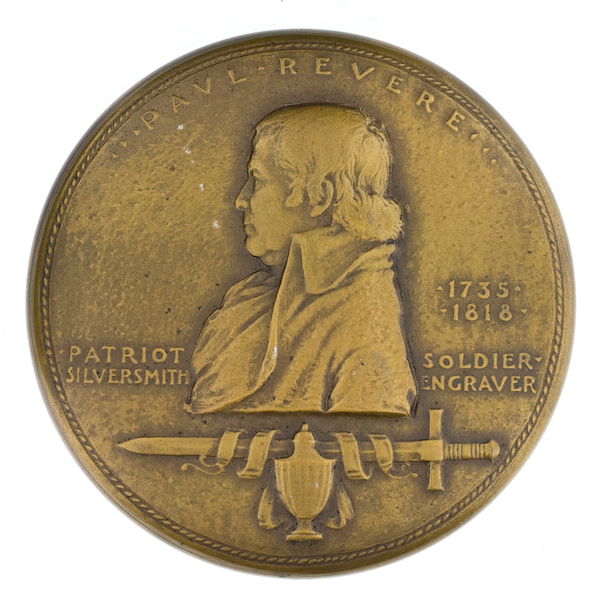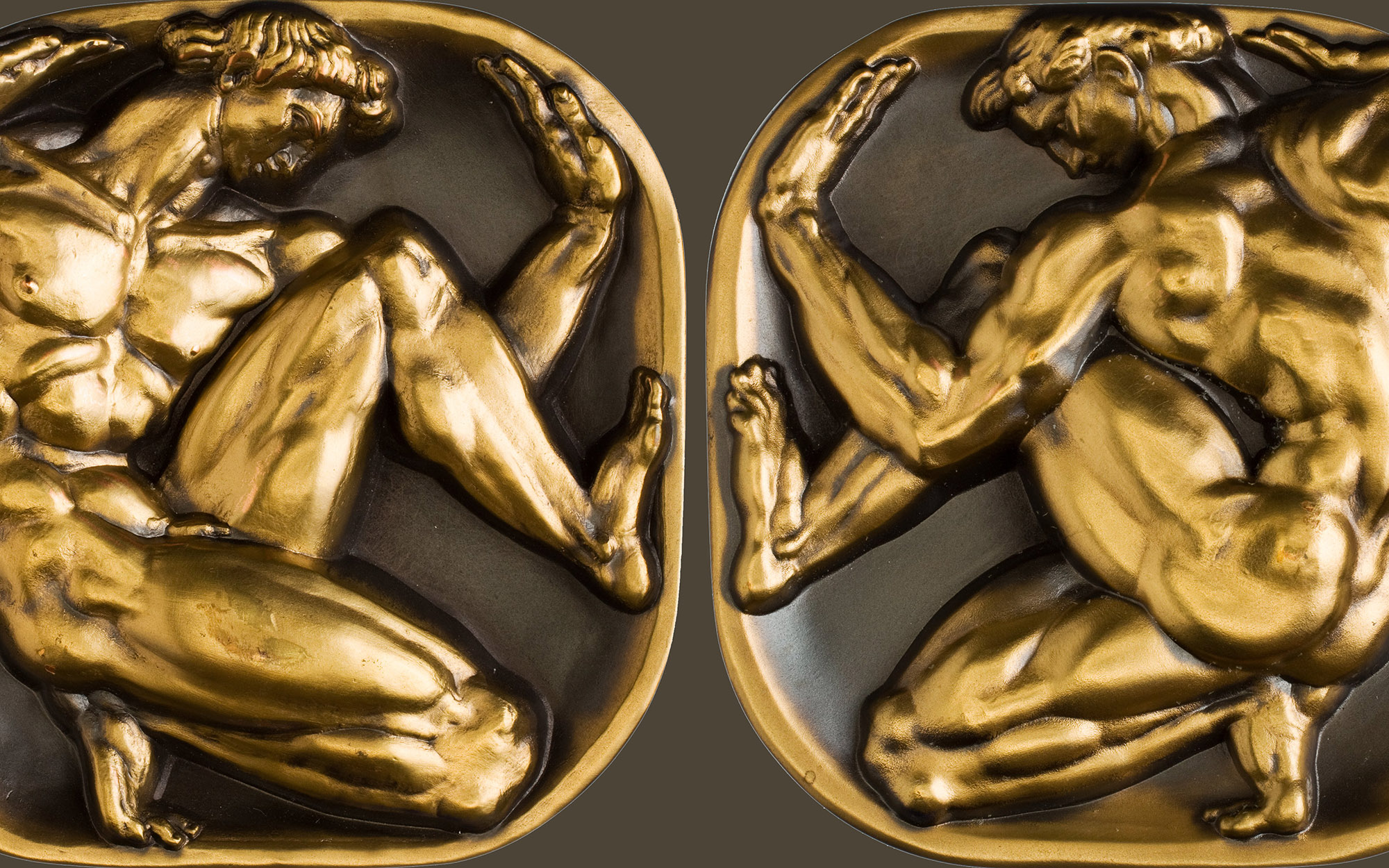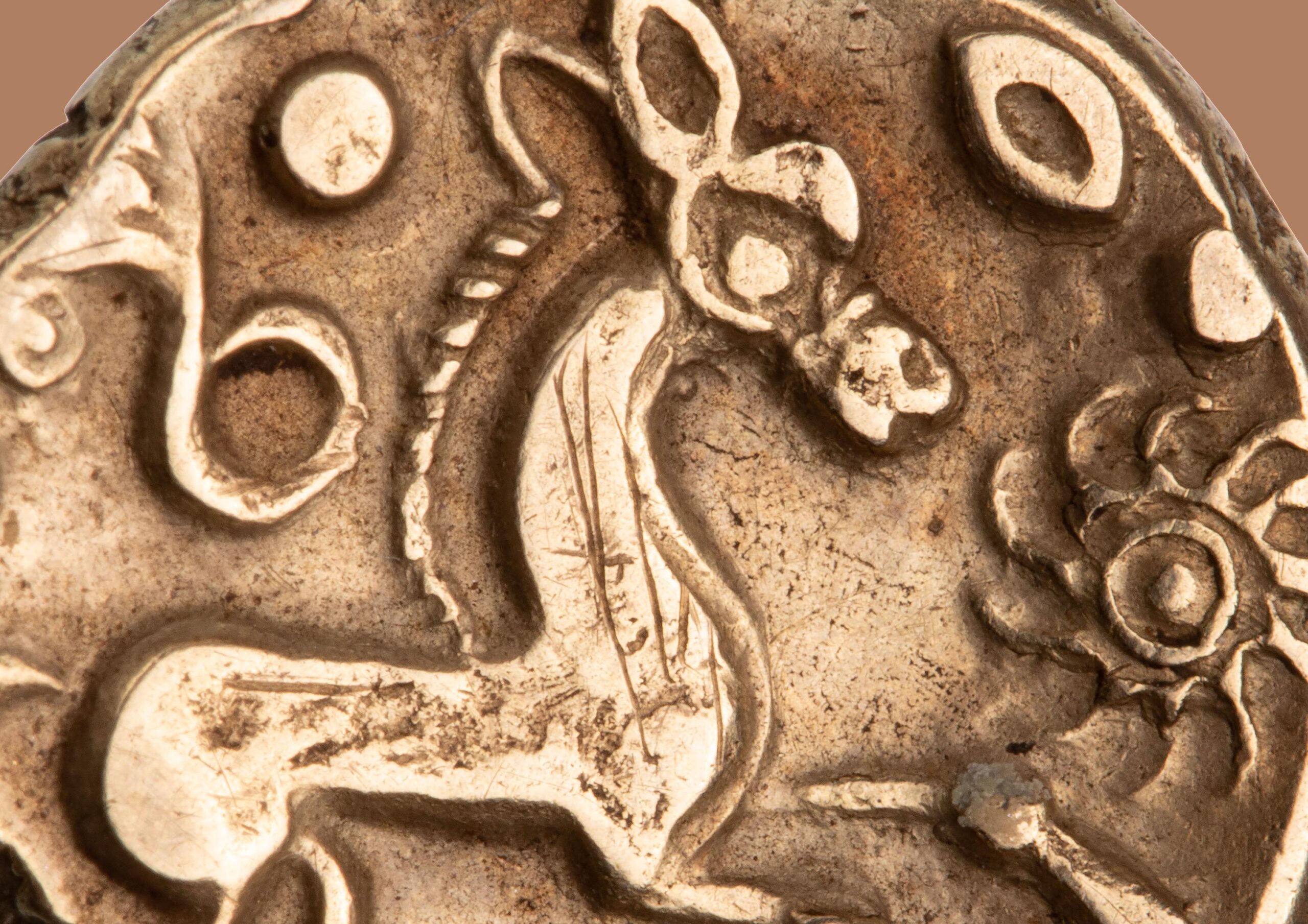The ANS's Paul Revere Medal


From the late 19th into the early 20th century, the ANS had a flourishing medal program. But by the 1920s it was facing criticism over the predominance of foreign themes in their designs. So the Society decided to issue medals with an American focus, to “stimulate interest in patriotic subjects,” as secretary Sydney Noe put it. The 150th anniversary of Paul Revere’s historic ride was deemed an event worth commemorating, and some ANS council members gave their unreserved approval. Others assented, but with reservations. Elliot Smith was against the Society issuing medals altogether, even those celebrating the “cherished deeds of great men and events,” since, in his opinion, they didn’t sell very well. But he agreed anyway. Stephen Pell also gave his consent but thought Ethan Allen’s capture of Fort Ticonderoga was a more important subject. (Of course, he would say that. He owned the fort.)

The project went forward, with Anthony de Francisci as the sculptor. According to the circular printed to promote the medal, the artist only had access to two Revere portraits on which to base the work, one by Gilbert Stuart and another by Charles Balthazar Julien Févret de Saint-Mémin, neither of which were considered particularly suitable, as they showed “the patriot in advanced years” and the Society wanted him to look as he would have about the time of his famous ride.
There exists, however, another portrait of Revere, by John Singleton Copley, and it is dated 1768, the year the famous rider turned 34. But as Scott Miller points out in his book on ANS medals, this painting wasn’t widely available at the time. Owned by the Revere family, it was seldom exhibited in the years before it was donated to the Boston Museum of Fine Arts in 1930. However, Noe was aware of this painting and, with the help of Ruth L. Benjamin, had sleuthed out some details about it, including the fact that it could be found reproduced in a book on American silver by Clara Louise Avery. When Noe finally had a chance to consult the book, he realized that the portrait would have offered little help, as Revere was shown in full face, and the medal called for a profile. For that the Saint-Mémin portrait was perfect, and the final product was clearly based on it.


The Society’s concerns about accuracy extended to other elements of the design. The sugar bowl depicted on the obverse was modeled from one actually made by Revere. At the time this piece was on loan to the Metropolitan Museum by Judge Alphonso Clearwater, who agreed to let it be photographed for the Society. He must have liked the way the medal turned out because he considered having one struck in gold, but he ultimately decided against it.

Despite the care that went into the medal’s design, there were critics. William Lester wrote to say that Revere was not, in fact, “ready to ride,” as he was on the wrong side for mounting the horse. F. Wayland Potter had the same complaint. Raised on a farm and riding bareback since he was eight years old, he was put off the medal as a result of this purported blunder: “I can’t say that I desire one.” Noe had to explain that it was never the intention to show Revere preparing to mount, but rather he should be seen as looking out for his famous signal. Moreover, he said, if Revere had been placed on the correct side for mounting, it “would have made it a medal of the horse rather than the rider.” John Max Wulfing’s objection was to the placidity of the scene. “This looks more like [John] Paul Jones on shore,” he scribbled on the circular. He attached photographs of Roman Republican coins showing a horse and rider in full gallop, which, he said, “looks more like Paul Revere’s horse to me.”

With all this negativity, Noe must have welcomed this note from Sanford Cluett, who thought the medal was “one of the best ever turned out in this country.” “You must have had a great many flattering letters concerning it,” he wrote. Well, sorry to say, I didn’t find any letters like that. But De Francisci seemed happy with it, anyway. He proudly reported to Noe that fellow medallist James Earle Fraser had said he liked it.
The Society worked especially hard to promote the medal, announcing that a “special effort is being made to make this medal a financial success.” More than 5,000 circulars were distributed, including to groups like the Pennsylvania Sons of the Revolution, which in turn mailed them out to their members. The medal received notice in the New York Times and Jeweler’s Circular, and copies were distributed to jewelers along Fifth Avenue, a plan devised by one of them, Albert Kohn, who arranged for the Society to receive 100% of the profits.
Despite all this, the medal was a financial failure. According to Miller, 173 bronze and at least 65 silver copies were minted. The bronze were sold for $5 and the silver for $15, though a few years later you could get the latter for $10. The Society’s next medal, also with an American theme, the tercentenary of the purchase of Manhattan, did even worse. After this, the Society’s medal program slowed to a trickle. Never again would it come close to matching the output of the previous three decades.




